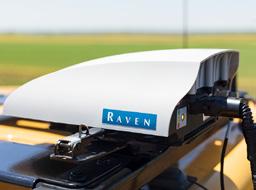
2 minute read
Importance of Precision Technology

RATE CONTROL
Advertisement
Precision agriculture allows farmers to be more productive, environmentally and economically sustainable, all while utilizing fewer inputs and less labor.
Farmers have access to a large suite of technologies that improve efficiency and productivity. Application rate control was one of the earliest advancements in precision agriculture. It gave farmers the ability to dynamically adjust and control application rates for chemicals and fertilizer based on speed. Rate control was a monumental innovation that increased sprayer efficacy. Today, rate control technology recognizes and compensates for machine turning and adjusts the application rate across the boom or toolbar width to ensure uniform and precise application.
Introducing Global Positioning Systems (GPS) to rate control increased the ability for precision solutions based on immediate location in addition to ground speed. Variable-rate application helps farmers pinpoint fertility applications to enhance highly productive areas in their fields. It gives them the ability to manage input costs to maximize productivity and profits. GPS technology allows Section control to recognize areas of the field that have already been covered or identified as non-application zones to maximize efficiency, reduce inputs, and protect sensitive areas. Operators can use coverage maps from previous applications to identify areas that do not require treatment. Doing so maximizes productivity and gives the operator confidence in their application, especially around waterways and ditches.
MACHINE CONTROL
GPS based guidance is utilized worldwide to minimize pass to pass overlap and significantly reduce operator fatigue.
Guidance technologies have advanced to combine GPS, visual corrections, and radar-sensors. Non-contact stereo vision cameras use guidance controllers and non-contact radar sensors to steer equipment in row crops with sub-inch accuracy. If rows disappear due to washouts or other factors, the systems will automatically and seamlessly transition between GPS and vision-based guidance. The systems can also provide hillside compensation and functions to compensate for slopes reducing crop damage from manual steering and reducing operator fatigue.
CONNECTIVITY, DATA, AND PRODUCTIVITY TOOLS
Wireless data connectivity is available for growers and retail applicators. Features offered include file transfer of applied and variable rate prescription maps, tools for tracking fleets of machines and assets, machine analytics that provide information on a series of operational metrics, and service/ support. Some systems enable sharing actual job data such that multiple machines can enter and work together on performing a specific job. These machines can be working simultaneously or separately, depending on what suits the operation’s needs. Retailers utilizing these systems often experience a dramatic increase in flexibility and productivity.
CONTENT ABOVE PROVIDED BY TRAVIS BUNDE, RAVEN INDUSTRIES
TIPS
THE QUALITY AND PERFORMANCE OF ALL THE TECHNOLOGIES REQUIRE SPECIFIC ATTENTION THROUGHOUT THE SEASON.

1
2
STAY CURRENT WITH ALL NEW SOFTWARE RELEASES AND UPDATES
Staying up to date on your field computer and controllers with the latest software version will ensure all systems are compatible and functioning at their highest level.
PERFORM CALIBRATION ACTIVITIES THROUGHOUT THE SEASON.
3
TAKE TIME TO SETUP AND CONFIGURE THE OPERATION OR JOB SCREEN
This ensures the applicable information is presented in a way that is easily consumed, so operators can focus on the job.











